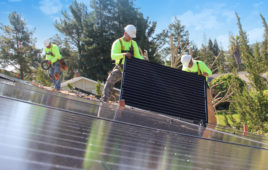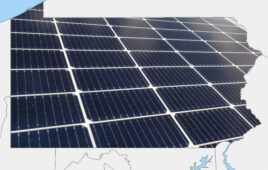When it comes time to launch your next marketing campaign, keep in mind that these tactics aren’t everything they seem.
By Carter Lavin, Solar Power World Contributor
Customer acquisition costs are now one of the top five most expensive components of a residential solar project. At around $0.50/W, customer acquisition costs must drop significantly for the industry to continue its meteoric growth.
Thankfully, costs will fall as solar’s financial case continues to improve, and “going solar” becomes more commonplace. But smart sales campaigns can drop that number today. Investing in effective homeowner outreach campaigns can lower acquisition costs by increasing customer awareness and generating leads on a large scale.
Many installers have small marketing budgets, so it’s smart to figure out how to spend it wisely. Some efforts have hidden costs and can leave you with little to show for all your work. So before you launch any of the following three types of campaigns, consider if they will help you profitably grow your installation firm.
Canvassing
At first glance, a team of canvassers going door-to-door to sign up new customers might seem like an easy way to generate sales. But it is surprisingly hard to generate sales and happy customers from canvassing.
The big issue is that people generally do not want to make 25-year commitments to strangers they meet on their doorstep. Even if a randomly selected homeowner is interested in solar, they might not be home, the canvasser may have caught them at a bad time or the poorly-trained canvasser may flub the pitch. The conversion rate for canvassing is so low that the only way you can have even a slightly profitable canvass is if you have as many canvassers knocking on as many doors as possible.
To scale up canvassing cheaply, installers need to keep training times short, canvasser pay low, and hours long. This results in high turnover because canvassers are not given the resources they need to succeed, so they quit in frustration. To minimize losses from turnover, installers will invest even less in their canvassing team and continue this painful cycle.
Telemarketing
Cold calling is also a tempting tactic. Assuming there are no legal obstacles, a single telemarketer can call more than 100 homeowners a day, so even with an extremely low conversion rate, they can still generate a meeting or two per day.
While telemarketing is an easier job than canvassing, with fewer training needs and lower turnover rates, installers who cold call are still faced with low-quality leads and low conversion rates. Also, a poorly designed telemarketing campaign can damage your company by eroding your brand strength. If your telemarketers are too pushy, uninformed, or in other ways spammy, you will not generate the sale and, worse, damage your reputation. A telemarketing campaign can net you a few appointments per week, but cost you time and your brand.
And keep this in mind: Your brand strength will significantly affect the success of your telemarketing campaign. A random potential customer is more likely to be converted if they have heard of the brand beforehand.
Lead Buying
In recent years, lead-generator companies have sprouted up to collect information on homeowners who are interested in going solar and then sell that information to installers. These companies often set up a basic webpage and invest in search engine optimization (SEO) and search engine marketing, so that when a homeowner searches for installers, they find the lead aggregator first.
Often the lead gets sold to multiple installers, but installers can buy “exclusive” leads from aggregators at a premium. While buying leads is a quick way to increase revenue, it creates new problems that should be considered.
The main issues with lead buying are:
- The leads might be low quality.
- They might already be sold to competitors.
- They may distract from your more profitable sales efforts.
The first two points are problems for obvious reasons, but the third one is a little more insidious. When installers become dependent on a lead generator, they start focusing all their sales efforts on converting those leads and stop building their own sales pipeline. So instead of becoming a lead pipeline owner, you become a renter. This also means your acquisition costs are driven by the market demand for leads. Also, by not going through the lead generation process yourself, you won’t benefit from the lower acquisition costs that come from the continuous improvement of your sales process and a strengthening brand.
It’s also good to be wary of dependency on a lead generator in case they increase their rates or get bought by a competitor.
With That In Mind
In the end, a marketing tactic is just like any other tool. Each has inherent advantages and disadvantages, and it can be great or terrible depending on the user. Some companies have shown you can be a successful solar installer with a strong reliance on canvassing. Numerous small installers have also shown that it’s OK to buy a few leads every now and then to goose a nascent referral program. And it is possible that there is an installer out there that has had amazing luck cold calling. But when it comes time to launch your next marketing campaign, keep in mind that these tactics aren’t everything they seem.
Carter Lavin is Solar Marketing Group’s business development manager and helps renewable energy companies analyze the market, articulate their messages and connect with their targeted audiences to achieve their marketing and communications goals.






Let’s get into some specifics, if $.50/watt is the average, what’s the best in class? What are those companies doing?
While this article provides a reasonable overview of some of the downsides of particular marketing and customer acquisition strategies currently utilized in the residential solar sector, I’m interested to hear what solutions the author may offer in Part Two to enhance these and other strategies. The underlying assumption here is that solar companies are not managing their sales pipeline efficiently and are emphasizing quantity of leads over quality. To the author’s point, no single marketing tactic is inherently better than the next. There are fundamental strategies that can be employed to optimize any marketing strategy by placing a greater emphasis on putting quality leads into your sales funnel and spending proportionally more time with high-value prospects. As the industry continues to grow, be on the look out for new solutions that enhance any marketing strategy by taking proven techniques from more mature industries and applying them to solar.